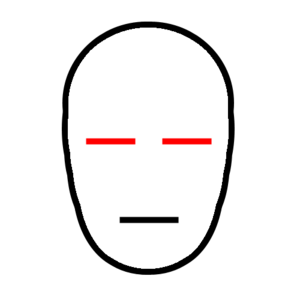B2 disability sport classification facts for kids
Imagine playing sports where everyone has a fair chance to win, no matter how well they can see. That's what the B2 classification is all about! It's a special group for athletes who are considered legally blind but can still see a little bit. This way, they compete against others with similar vision, making sure their athletic skills are what truly count.
What is B2?
B2 is a way to group athletes with similar vision. This helps them compete fairly in sports. The International Blind Sports Association (IBSA) creates these rules. They say B2 athletes can see a little bit. For example, they might be able to recognize the shape of a hand.
Their vision is usually described in two ways:
- Visual acuity: This is how clear their vision is. For B2, it's often around 2/60. This means if someone with normal vision can see something from 60 feet away, a B2 athlete needs to be only 2 feet away to see it clearly.
- Visual field: This is how wide an area they can see. For B2, it's usually less than 5 degrees. Imagine looking through a very small straw; that's how narrow their view might be.
The Canadian Paralympic Committee says B2 athletes have "Up to approximately 3-5% functional vision." This means they use a small part of their vision to help them. The B2 group is used in many sports, not just those run by the IBSA. For example, blind golf also uses the B2 classification.
B2 in Other Sports
The B2 classification is similar to groups in other sports. These groups help athletes with disabilities compete fairly.
- In adaptive rowing, a similar group to B2 is called LTA-B2.
- For horse riding, athletes in Grade 4 have similar vision levels to B2.
- In swimming, the S12 group is similar to B2.
History of B2
The idea for B2 started when blind people first began competing in sports. It quickly became clear that athletes with better vision had an unfair advantage. To make sports fair for everyone, the IBSA created different groups. These groups were based on how much vision an athlete had. This way, athletes competed against others with similar vision challenges.
The B2 classification has stayed mostly the same since it was first created. This is true even as the International Paralympic Committee (IPC) has updated its ways of grouping athletes. This helps ensure fair competition for all.
Equipment for B2 Athletes
Athletes in the B2 group use special equipment to help them compete. This equipment helps make the sport fair and safe for everyone.
- Sighted guides: Some B2 athletes use a sighted guide. This is a person who runs or moves with the athlete and gives them directions. Whether a guide is used depends on the sport.
- Guide rails: In some sports, like track and field, athletes might use a guide rail. This helps them stay in their lane.
- Beeping balls: Sports like blind football use balls that make a sound. This helps athletes find and follow the ball using their hearing.
- Clap sticks: These are used in some sports to give sound cues to athletes.
For example, in blind archery, B2 athletes use a special device. This device helps them aim using their sense of touch. They cannot see well enough to use a regular bowsight.



